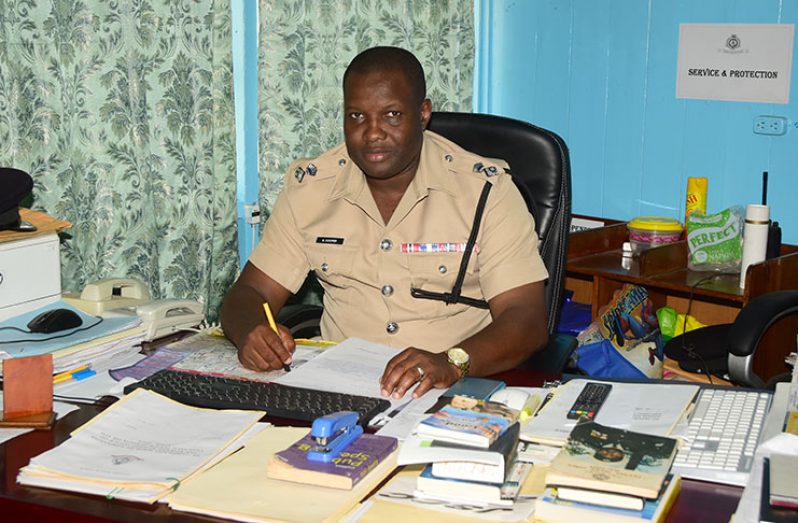–rather efficiency, efficacy is what matters, says Commander Cooper
WHILE crime rates, number of arrests, and case clearance may seem a good way of measuring performance, keeping crime down does not necessarily mean efficiency and efficacy.
This is according to Commander of ‘C’ Division, Senior Superintendent Edmond Cooper, who contends that rather than looking at crime rates, number of arrests and response time, evaluation should be based on whether the agency is effective in fulfilling its responsibility to the communities they serve.
Noting that the police should always consider what citizens want and expect of them, the commander said most citizens want to live in safe, orderly neighbourhoods.
“Reduction of fear is a very important measure; it sends a very clear message to the public that the Police are addressing their fear of crime and neighbourhood disorder,” he said.
When evaluating the effectiveness, efficiency and productivity of the police departments, Cooper said, managers need to focus on their mission statement.
Citizens’ approval or disapproval of Police performance, he said, is generally reflected in their support for police programmes; letters of criticism or commendation; cooperation with investigations into crimes and incidents; letters to the editor; or public response to a single police-citizen incident.
Noting that the Police are considered effective when they lend to the perception that crime is under control, the Commander said one way of assessing this is through citizens’ surveys.
He explained that the police can receive positive feedback from communities and citizens by establishing various forms of communication.
CITIZENS’ SURVEYS
Underscoring that the Police Force can conduct citizens’ surveys to find out whether or not they are efficiently and effectively utilising their human and other resources in the fight against crime and traffic lawlessness, Cooper said it has many university graduates among their ranks that can do it.
According to an Inter-American Development Bank (IDB) report released in 2017, Guyana and other Caribbean countries need to change their crime-fighting tactics, and to do so quickly if they are to arrest the runaway problem theyre now facing where crime is concerned.
In conclusion, the study, titled ‘Restoring Paradise in the Caribbean: Combating Violence with Numbers’, suggests that regional states redirect their anti-crime efforts in favour of more interventions that are evidence-based and targeted at high-risk individuals and geographic areas, with improved monitoring of police and justice systems.
Again according to the IDB, compared to the rest of the world, the Caribbean has some of the largest police-to-population ratios, yet still their governments spend far more money on policing than Central American countries with similar or higher crime rates do.
An interesting point that came out of the study is that crime is not spread evenly across all places; that people, or times, and police efforts should be directed to where crime is concentrated.
The evidence, it says, shows that standard-model policing, including random patrols, increasing the number of officers, and general reactive strategies have no effect on crime.
What does, the study says, is identifying problems within the community and developing thoughtful, tailored responses to address the underlying causes of the problems, and devising meaningful and effective solutions.
The study also underscores that to be successful, initiatives must be a part of a wider internal culture and structural shift that values professionalism, accountability, and transparency. The communities that law enforcement serves, it says, should be valued as co-producers of security.
Currently, the 2017 report notes, prevention programmes tend to be understaffed and under-resourced, while law enforcement has expanded to levels above the international average, and among the highest in the Americas (an average of 560 officers per 100,000 population in the Caribbean, versus 360 officers internationally).
Law enforcement, it says, continues to dominate national budgets for public safety. Therefore, achieving a balance in the Caribbean effectively means politically, administratively, and financially bolstering prevention programmes and recognising them as a proven means to effectively reduce violence.




.png)









